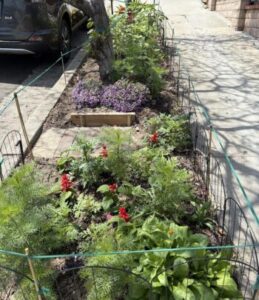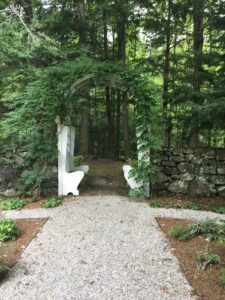Solutions for Planting areas between the sidewalk and the street
Part 2
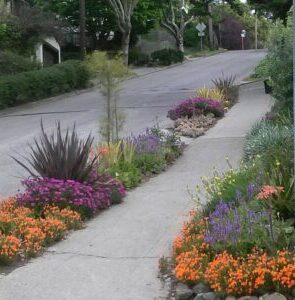
I wanted to give some further tips and ideas for park strip planting areas after my previous blog article on preparing and seeding the park strip in front of our home in L.A.
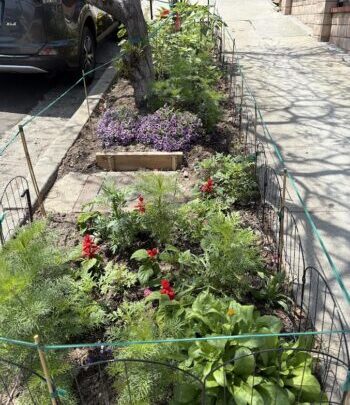
Crossing Areas in Park Strips
The first thing to consider when planning the layout of a park strip is the crossing areas. I like to line up the crossing areas with the walk to the home or the front door. Its also important to consider the typical spot where car doors line up when parking. Lot of homes don’t have a walkway to the front door so guests access the home from the driveway or by walking across the lawn or yard.
The placement of crossing areas are also influenced by the existing street trees or their roots, signs hydrants or obstructions. Some park strips are so full of roots and the trunks of the trees that is impossible to install a safe crossing area! We do the best that we can to allow access to the car doors and side walk.
Here are a few ideas for paving or crushed rock crossing areas in park strips:

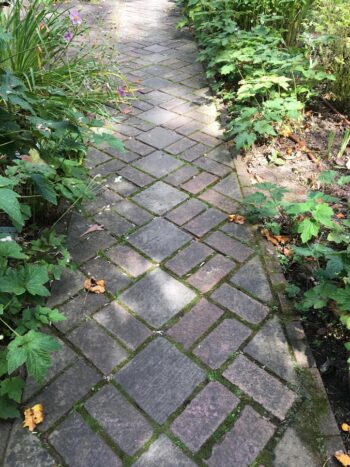
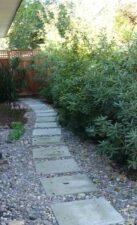

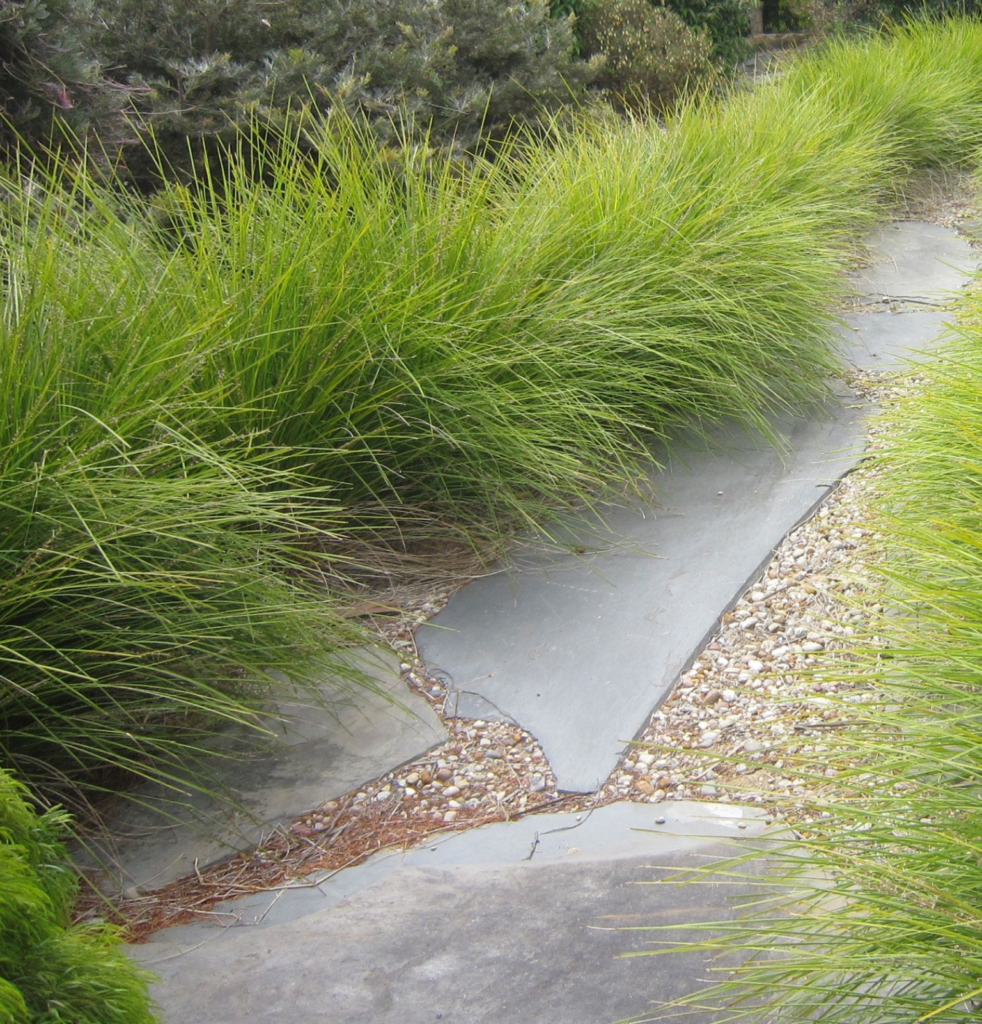
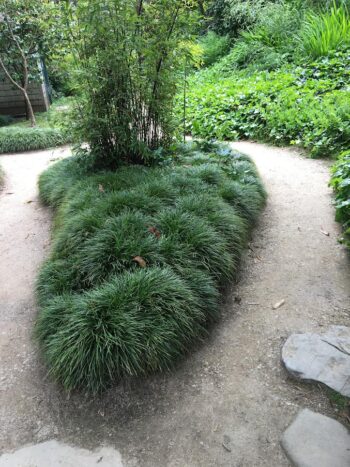
Not all these photos are of crossing areas in park strips, but are examples of some simple pathways that work well.
Why not just a simple concrete path? Yes, you could install a concrete path but check with your city planning office first for rules about park strips. Some cities no longer allow solid paving in these strips. Bricks, flagstones and pavers laid on sand or fines can be lifted out more easily, in case the city needs access to underground utilities. The path areas shown can also be reset if tree roots or sinkage causes the area to become uneven over time.
Other Considerations to Keep in Mind
Cutting of large tree roots can damage or kill the street trees so a certified arborist should perform this work if needed. Try to line up your crossing areas to avoid large roots.
When installing a path do a professional job. Just like the path or walk to your home, the crossing area in a park strip cannot be a hazard to walk on for the general public. The areas should be even and level without any tripping or falling points.
Use thick slabs of stone when using flagstones- at least 1 1/2″ thick, so they hold up well and don’t crack.
Avoid using using spiny or thorny plants next to the crossing areas and sidewalk to reduce chances of injury. It makes me cringe when I see Roses or Cacti planted next to a driveway, sidewalk or crossing area. Ouch.
Maintain these areas with the rest of your garden. Check the parking strip for weeds, uneven paving and debris regularly, so they don’t become an eyesore or unsafe. Deeply water street trees in summer to keep them healthy (at the edge of the tree canopy, which may be in your yard).
Use ‘Preen’ pre-emergent herbicide to help control weeds in plantings and ground cover. Apply as per the label directions. Water in well.
Keep your plan simple. Use wide crossing areas with just a few plants to soften the area. Use river cobbles, gravel or shredded mulch around the base of street trees pulling the material away from the trunk 3-4″ to avoid crown rot.
Installing Crossing Areas in Park Strips
Dig out areas where the path will be 5-6″. Fill the depression with fines (small particle rock) or course sand leaving room for the thickness of your path material. Tamp down the sand or fines very well until you have a firm surface. Do yourself a favor and lay down a layer of woven weed cloth below the paving and wire mesh (if gophers or voles are an issue in your area). If you are planting ground cover between the stones you won’t use weed cloth. Also, if you are planting between the paving materials use sand as the base.
Weed cloth doesn’t last forever but helps for a long time. You will probably still gets a few weeds in the cracks or spaces between the paving but those easily pulled or sprayed.
Lay in your pavers, stepping pads or bricks using a rubber mallet to tap them in place. use a little extra sand to even up the stones or pavers as needed. Use a level to check that they are even with the curb and sidewalk. Fill the cracks between the bricks or pavers with sand swept into the joints. You shouldn’t need an edging for the flagstone, brick or pavers since the soil will hold them in place well. Only exception is stepping stone/ pads with large gaps filled with gravel, fines or rock. An edge of 2×4 pressure treated lumber can be used as an edge for these type of path areas.
An area of just fines or decomposed granite edged with redwood or pressure treated 2×4 and staked with rebar on both sides 4-6″ apart is also a simple path solution. Many garden supply companies have fines pre-mixed with a binder so that path firms up to be very hard. When installing fines or decomposed granite, tamp the path very well with a heavy roller or tamper (rentable items). Fines premixed with binder is watered down after the install to activate the binder. The path area will sink over time, but more fines can be added to maintain the path.
For stepping stones- walk on the path a few times to make sure the spacing of the stepping stones are comfortable to walk over. Fill the cracks or spaces between the flagstones with gravel, crushed rock, or a 50/50 mix of planting mix and soil from the area, if you are using ground cover in the areas between the stones.
If possible, a run watering line to the crossing area from your home irrigation system. There is a tool to tunnel under the sidewalk using water pressure, allowing the installation of a watering line.
Plants for Park Strips
Plants in park strips need to be tough, durable and low water. Many areas also have heat considerations. Life for plants in park strips is rough. Dogs peeing on them, people stepping on them or setting things on them, trees stealing all the water and hard soil filled with tree roots. Golly.
Despite all of this, there are some survivors that usually last.
We have all seen park strips overflowing with Juniper or Star Jasmine, so size the plant to the space. Usually medium or tall shrubs are problematic, as they block the view of pedestrians and cars backing out of driveways. Therefore, compact plants that don’t spread too wide are usually good picks for park strips. Here are a few ideas of plants to use in park strips:
Shaded Planting Areas
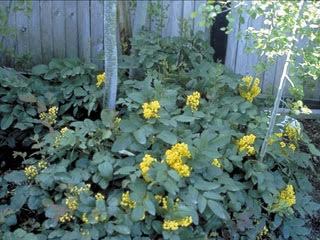
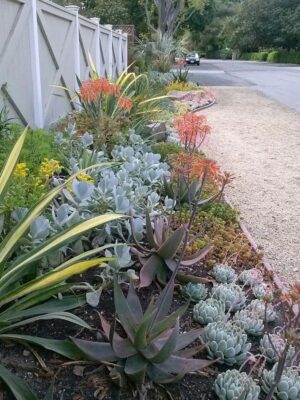
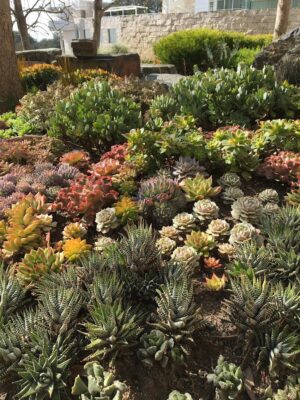
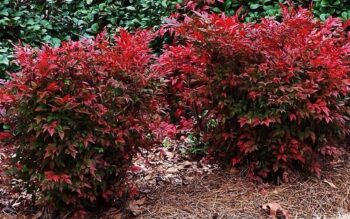

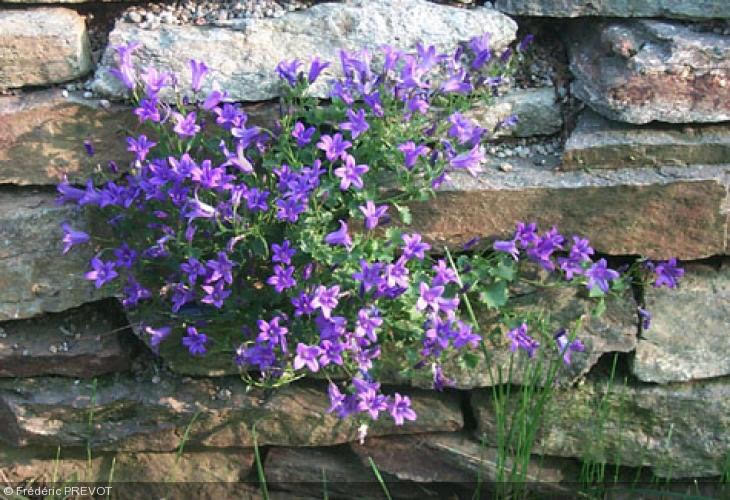
ground cover for light shade
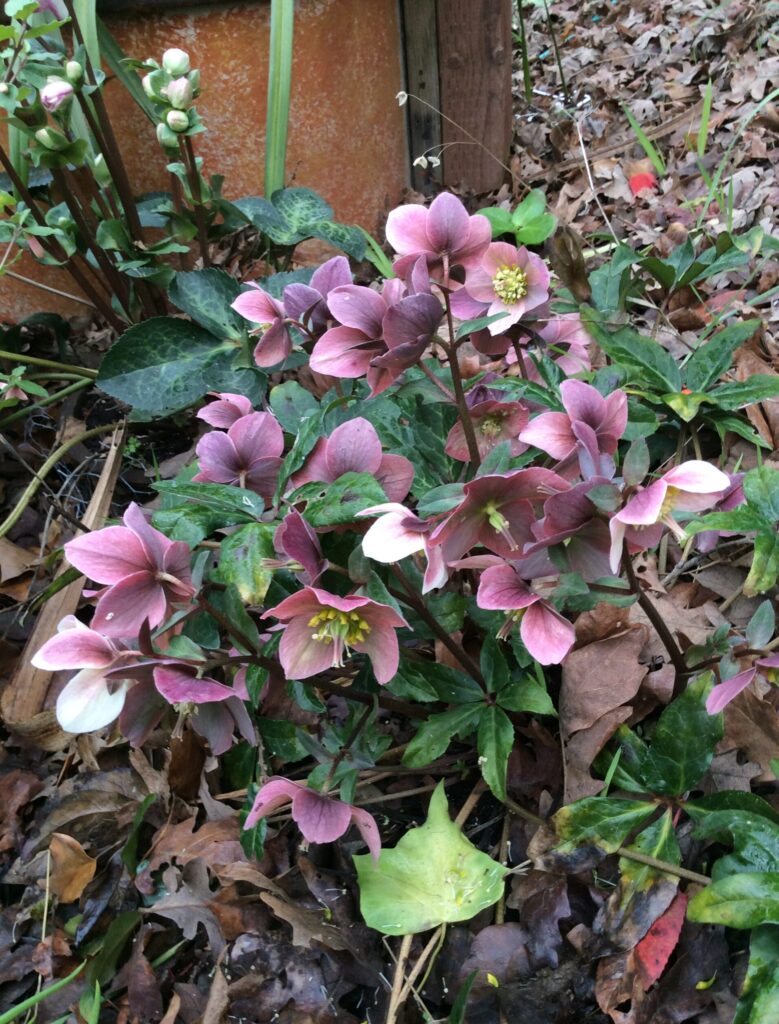
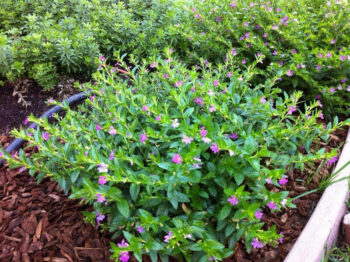
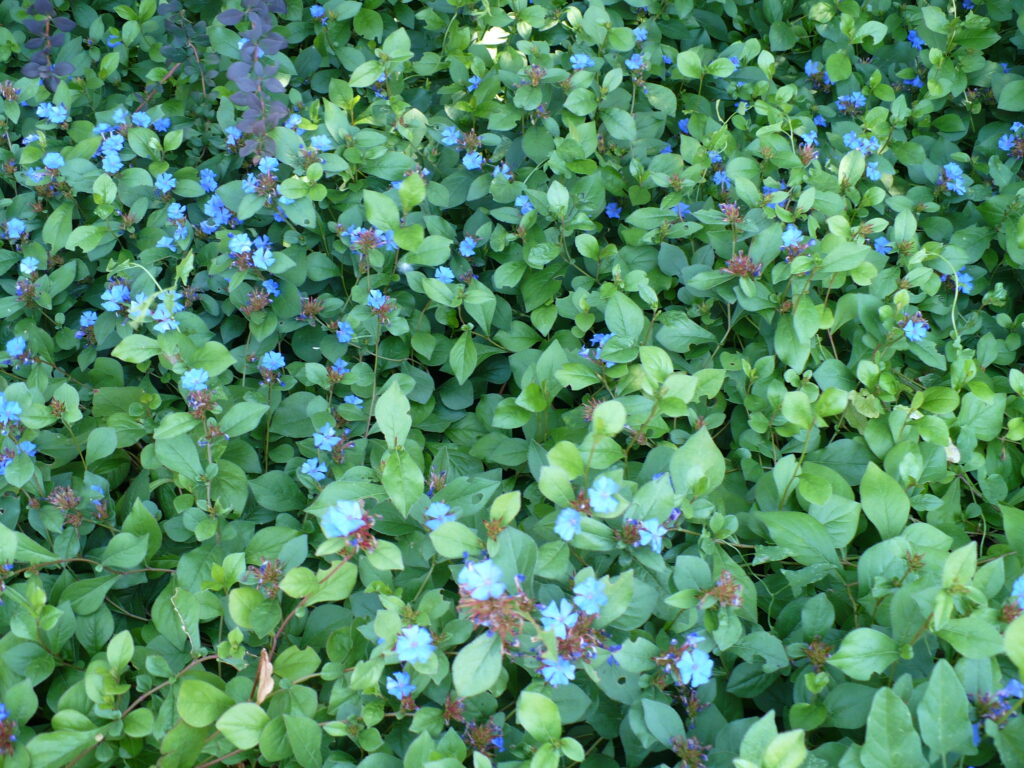
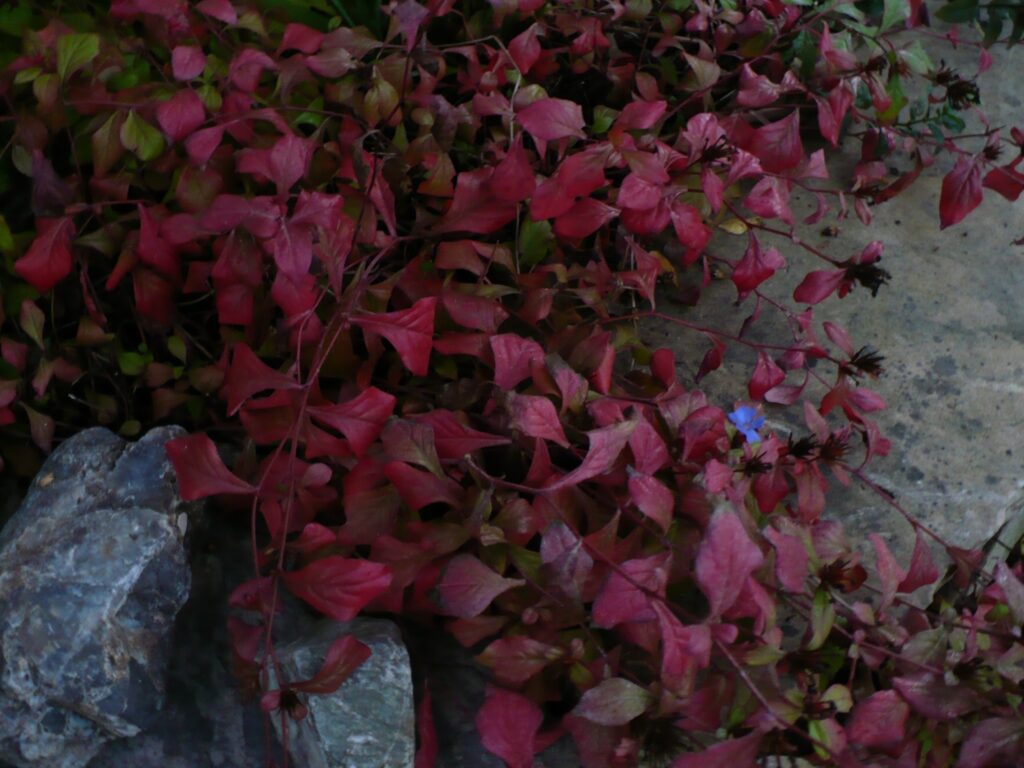
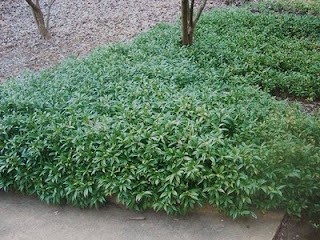
For shaded areas, it is good to dig out some of the native soil (approx. 2-3″) and fill with a organic matter rich planting mix a.k.a camellia-azalea planting mix. Dig this in with the native soil in the park strip and add slow release fertilizer i.e. ‘Osmocote’ Slow Release Fertilizer.
The photos are a few suggestions of plants I have used that are resilient and attractive.
Succulents are sensitive to frost so are not useful in cold winter areas. They prefer some shade and can even tolerate quite a bit of shade. They get sun burned in full sun in areas away from the coast. They can break off or get matted down, but can be easily regrown from cuttings.
Use the dwarf forms of the Nandina and Mahonia rather than the standard plants so they remain compact. I didn’t show Star jasmine but it is a super tough and durable plant for park strips. Prune off tendrils once a year in spring to keep them compact and neat.
Sun Plants for Park Strips
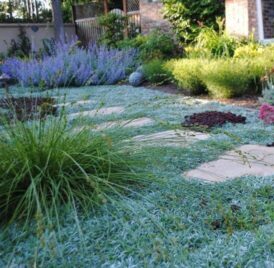
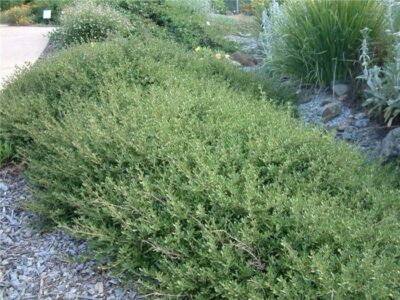





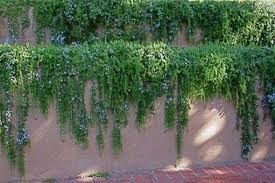
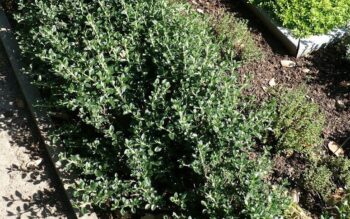

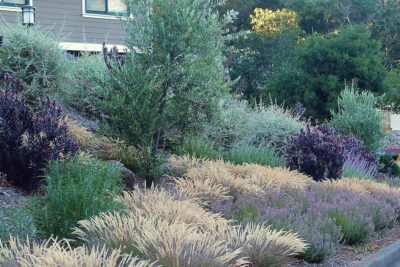

Some of the herbs we use in landscaping are great in park strips too i.e. Lavender, Creeping Rosemary, Teucrium or Germander, Thyme and many of the ornamental Salvias or Sages. The Hummingbirds, bees and butterflies love these plants too.
Not all ornamental Grasses are easy to maintain but Lomandra- Dwarf Mat Rush and Helictotrichon-Blue Oat Grass have been good ones and have a nice soft texture.
If the plants are getting woody or spindly give them a prune back in late fall or winter and they will gets nice new growth in spring. Replace plants that don’t rejuvenate well.
Using Native Plants and Xeriscape Plants in Park Strips
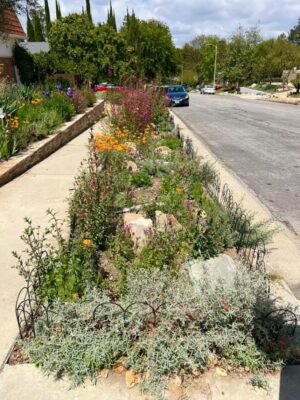
I pulled this photo off of Facebook from one of the California native plant Facebook pages. Its a very nice example of using native plants in a park strip planting area. One thing to keep in mind about native plants though is that they have a bloom cycle in spring and early summer and then go dormant during the hot weather. Essentially, becoming dry and woody. Giving some water in the summer and fall helps, but this is the natural cycle for native plants and it is how they have adapted to no summer rain. Give them a trim in late fall and they will grow out and bloom the next spring.

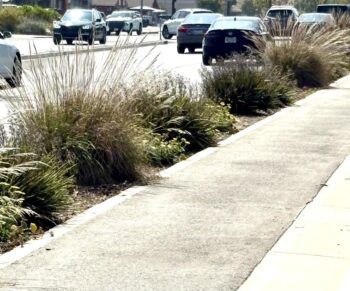
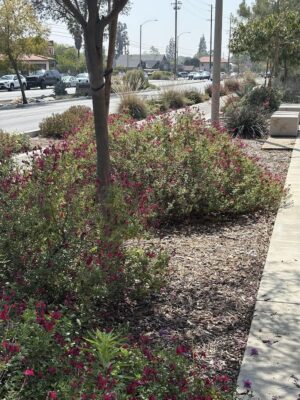
Xeriscape is a type of landscape that takes very little auto or manual watering. I saw these strips in Claremont, California and they use milkweed, ornamental grasses, the succulent form of Senecio , Dianella and Salvia gregii along the roads way. Its a nice mix of textures and colors.
Adding Inert Materials

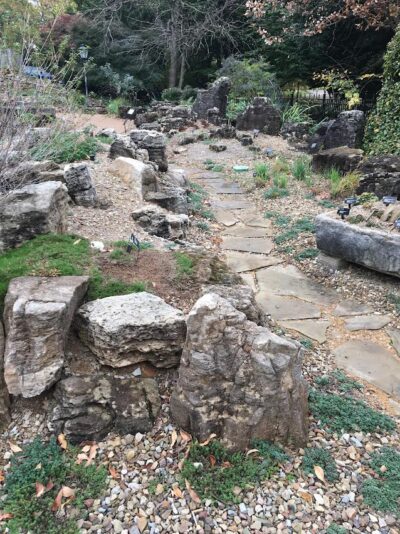
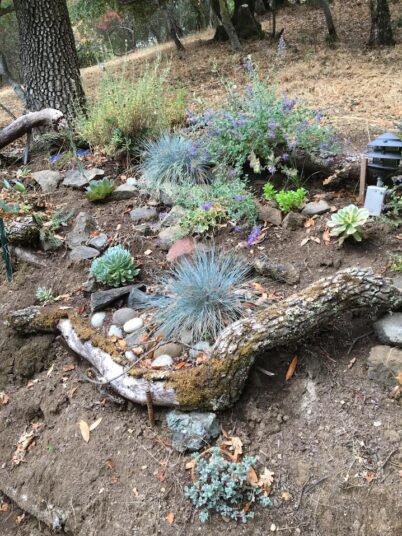
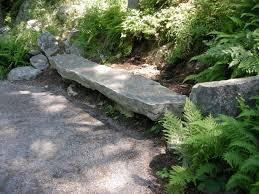
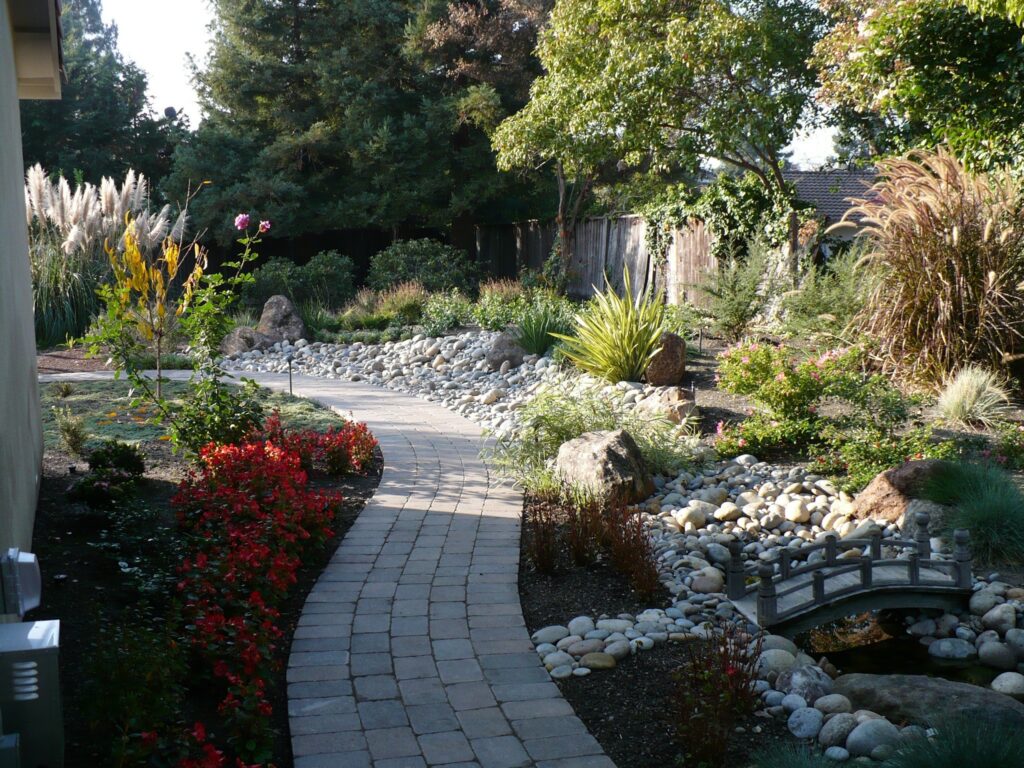
Consider adding some stones or small boulders to your planting scheme to give a different texture and look. Inset the boulders 3-4″ so they look “seated” in. If you have a large park strip, and folks that walk in your neighborhood then a stone slab seat might be a nice addition. The one pictured is pretty long, but a smaller version could work.
Large pieces of Driftwood or interesting logs are neat looking in among the plants. Inset them into the soil 2-4″ so they stay in place.
River cobbles are popular and can be under laid with woven weed cloth. Keep them away from the trunks of trees at least 3-4″ to avoid crown rot. Stake down the weed cloth with U-shaped landscape pins before laying down the stones. River cobbles can useful where roots make it difficult to plant or lay a path. Do not use these stones as crossing areas or at places where car doors open as they can be an ankle twister to walk on. Use pea gravel or shredded bark mulch instead.
Park Strip Planting Ideas Recap
A few last pictures of ideas that would work in a park strip planting area. I like to show a lot of photos to help spark your imagination!
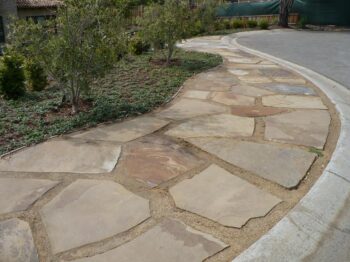
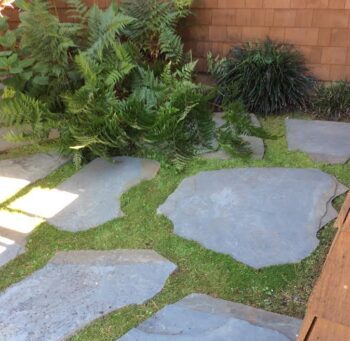
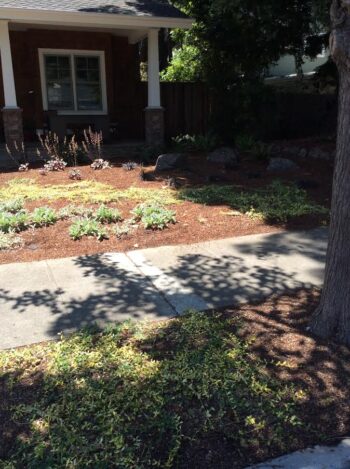
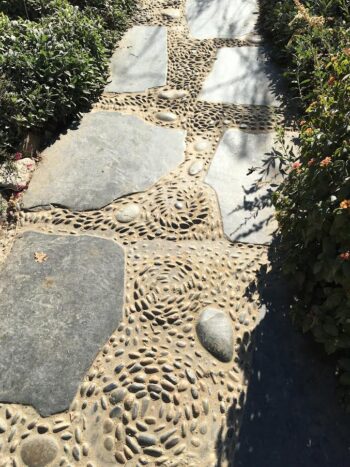
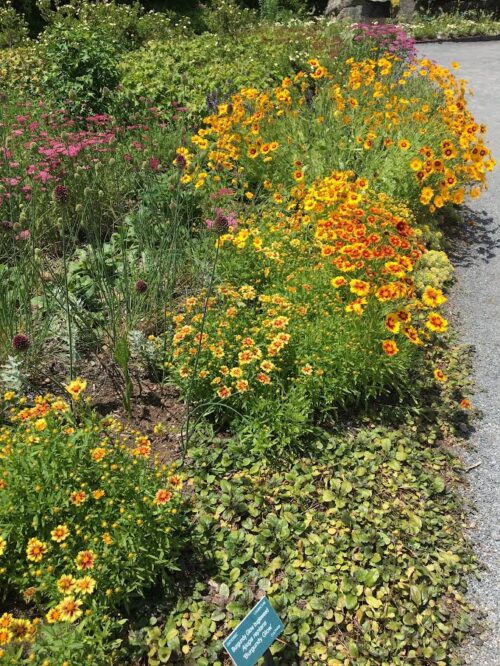
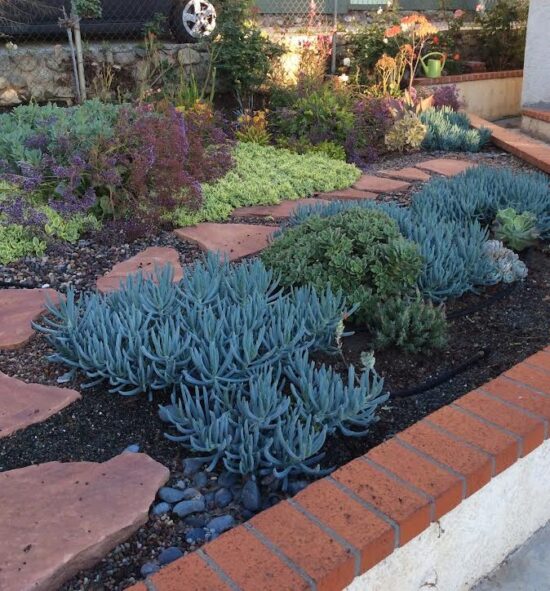
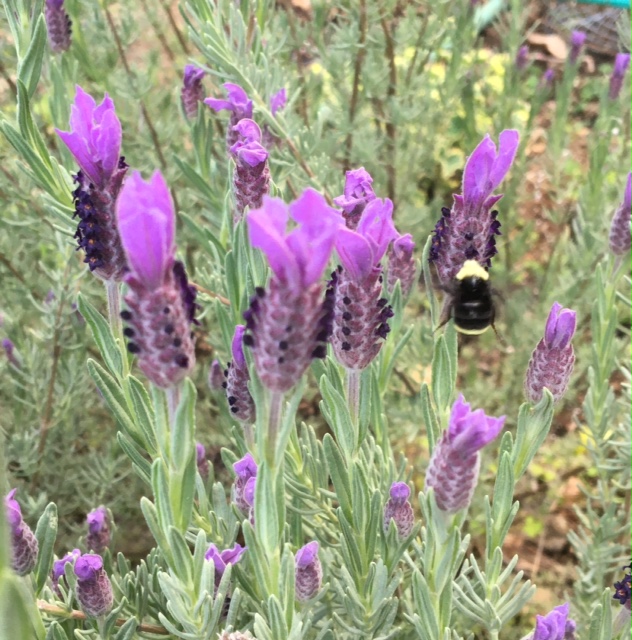

To recap the main points:
*Provide access points to go from the parked car(s) to the sidewalk and the home.
*Use hardy plants that are compact and resilient.
*Run automatic watering to the area if possible.
*Keep the design simple and easy to maintain.
Be ready for compliments when you improve this often neglected piece of real estate!
Explore other topics on the Green Speak blog page and see the previous blog giving information about park strip plantings areas. Click the button below to be transported.


